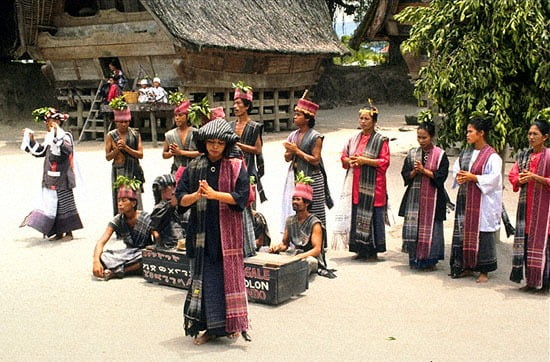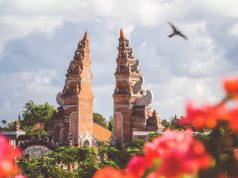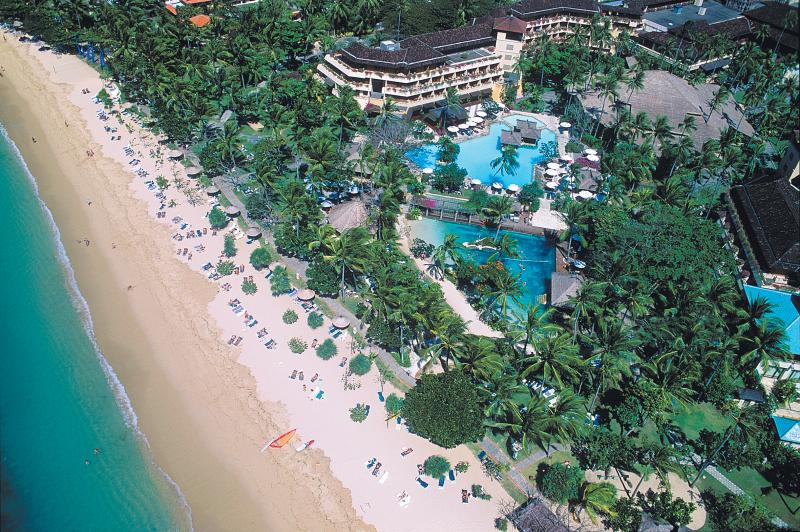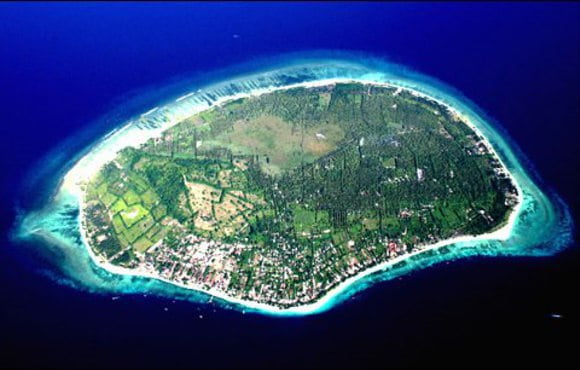Sumatra gets its name from a combination of the Sanskrit words Swarnadw? pa, meaning “island of gold” and Swarnabh? mi, meaning “land of gold.” The name is due to gold deposits found on the island’s highland, but Sumatra has much more to offer than just gold.

Sumatra is one of the most resource-rich islands in already resource-rich Indonesia and produces around 70% of the country’s total income. Oil and gas, rather than gold, are its most important exports, but it also produces plenty of coal, gold, silver, rubber, pepper, coffee, tea, sugarcane, oil palms, tin, bauxite, timber, and tobacco.
The People of Sumatra
Sumatra is the largest island that is entirely Indonesian and the 6th largest island in the world. The island is currently home to over 50 million people, who make up 22% of Indonesia’s total population. Much like the rest of Indonesia, Sumatra’s residents are a blend of many ethnic groups and languages. There are over 50 languages spoken throughout the island by a variety of ethnic groups, but many of the languages are closely related and the majority of the group share similar traditions.

Sumatra is a largely Muslim country, with around 87% of the population identifying themselves as Muslim. But you can still find other religious groups here – Sumatra’s population is 10% Christian, 2% Buddhist, and 1% Hindu.
Sumatra’s Geography
The huge island offers an abundance of natural wealth and Sumatra is a rare delight for nature lovers. There are jungles, volcanoes, and lakes to be explored and the rain forests of this island are so important that in 2006, around 25,000 square kilometers of the rainforests on Sumatra was declared a UNESCO World Heritage Site and named The Tropical Rainforest Heritage of Sumatra.
Sumatra has over 10 national parks and 3 of them (Gurung Leuser National Park, Kerinci Seblat National Park, and Bukit Barisan Selatan National Park) are part of the World Heritage Site’s Tropical Rainforest Heritage of Sumatra.

Sumatra’s terrain is varied and fascinating to explore. There is a volcanic mountain range known as Bukit Barisan that spans the island’s entire west coast, providing a breathtaking backdrop. On the east side of Sumatra, swampy lowlands dominate, interspersed with mangroves and complex river systems. Despite the deforestation happening throughout Sumatra, you can still find lush tropical jungles all over the island. The equator crosses through the center of Sumatra, which can make a fun, tourist stopover spot.
Sumatra’s Flora and Fauna
But Sumatra’s greatest gem is its great diversity of flora and fauna. Here you’ll have a chance to see endemic Sumatran Orangutans (did you know that the word ‘orangutan’ is originally Indonesian?), as well as the Sumatra Tiger and Rhinoceros – if you’re lucky.

The island is also home to 201 mammal species, 580 bird species and around 300 freshwater fish species. These include the Sumatran Tiger, Orangutan, Rhinoceros, Elephant, Striped Rabbit, Shole, Dayak Fruit Bat, Malayan Tapir, Malayan Sun Bear, and the Sunda Clouded Leopard.
Sumatra also supports a wide range of vegetation types and is thus home to a rich variety of species, including 17 endemic genera of plants. Here you’ll find the unique Sumatran Pine which covers the Sumatra tropical pine forests of higher mountainside as well as the rare Rafflesia arnoldii (the world’s largest flower).

Unfortunately, Sumatra has lost roughly half of its natural forest cover since 1985 – primarily due to deforestation – and many of the remaining species are now endangered. If you want to visit – the time is now.
Sumatra is a gem of an island that has much to offer a nature-loving traveler, but tourism on the island has been declining since the 2004 Tsunami which struck the western coast of Sumatra. Since then, recent major earthquakes in 2005 and 2010 has further helped the decline of tourism. Due to this, you’ll find that locals in Sumatra are very curious about the travelers who do still come through the island and you might find yourself the center of attention quite often.
Best Time to Visit Sumatra
Sumatra is a hot island and the climate is lush, tropical and humid year round with tropical rainforests forming a large part of the landscape.
There are only two distinct seasons on the island: the ‘dry season’ ranges from May to September and the ‘wet season’ is from November until March.
Monsoons during the wet season can cause flooding and blocked roads, so the best time to visit Sumatra is during the dry season.
Getting to Sumatra
Medan is the largest city on the island and its international airport has the most flights flying into it from neighboring countries like Singapore and Malaysia. Medan’s international airport also has numerous flights to various other Indonesian cities. Check out the best budget airlines flying into Sumatra!
Things to See and Do in Sumatra
Sumatra is an island rich with ancient traditional and breathtaking natural wonders. It offers something for every nature lover and culture junkie from exploring the thriving marine eco-systems off of Pulau Weh to staying at a Batak tribe homestay on Lake Toba.
Below are some suggestions of things to see and do in Sumatra, but the list is a lot longer than this. Sumatra is a huge island and there is a lot to be explored. Check out this post for a complete, yet simple, guide to Sumatra travel.
1. Medan
Medan is the capital of Sumatra and a great starting point for exploring the rest of this beautiful island. You can find vestiges of Dutch colonialism here, along with museums and ornate mosques. Learn more about things to do and see in Medan!
2. Lake Toba
Ahhh, Lake Toba is a must-see if you’re in Sumatra. Situated at around 1,000 meters above sea level, this picturesque lake holds a densely populated island at its center where many a visitor ends up staying and relaxing longer than he or she planned. This refreshingly cool retreat is the perfect spot to unwind after jungle trekking through Sumatra. It’s located around 175 kilometers from Medan – find out how to get there!
3. Berastagi
Berastagi is a beautiful town located about 70 kilometers from Medan. Its claim to fame – volcanoes, namely Gunung Sinabung and Gunung Sibayak. You’ll find plenty of trekking and wildlife exploration in Berastagi. Not to mention the wonderful variety of fruits, vegetables and flowers that this town is famous for.
4. Bukit Lawang
Bukit Lawang is a small village that is one of the top destinations in Sumatra. Why? Well, it’s located on the edge of the Gunung Leuser National Park, one of the three national parks that make up the World Heritage Site’s Tropical Rainforest Heritage of Sumatra.
Bukit Lawang’s particular claim to fame is its Bohorak Rehabilitation Center, now known as the Orangutan Center.
5. Danau Ranau
The beautiful Lake Ranau, or Danau Ranau, is located in the Bukit Barisan Mountains of southern Sumatra. This lake is one of the least spoiled of Sumatra’s mountain lakes and offers cool, serene relaxation for its travel-weary visitors.
Sumatra Travel Tips
The same rules apply here as elsewhere in Indonesia – sun and mosquitoes are a fact of life here so bring sunscreen and mosquito repellant (preferably from your own country since the local mosquitoes get immune to the local sprays).
It’s also a good idea to have a raincoat or umbrella since sporadic rainfall is a possibility here. If you don’t have those, though, you can also find them here.
And as always – travel insurance is a traveler’s best friend.
Thanks for visiting our site Voyager – indonesiad.com and taking the time to read our post!
We’d love if you’d comment and share this post.
If you find the website helpful we would appreciate if you support us by clicking on the related Ads that Google provides you around the pages.





[…] you find yourself traveling in Sumatra, Lake Toba is a must […]